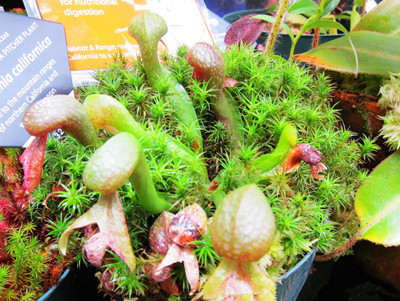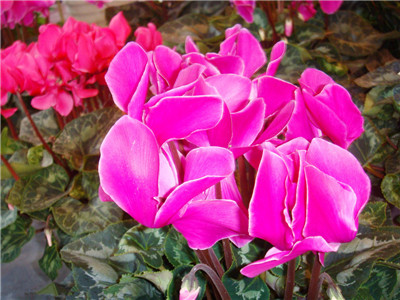Propagation method of aquilegia
Ipomoea angustifolia likes cool climate and avoids high temperature exposure in summer. It is suitable for growing in sandy loam. Strong and hardy, like sandy loam rich in humus, moist and well drained. Ramet or sowing propagation, sowing and reproduction can be carried out in spring and autumn.
It is necessary to apply sufficient basic fertilizer before planting, and it is relatively dry in spring in the north, so it should be watered 4 or 5 times a month (according to the environment, the dry humidity of the basin soil should be appropriately increased or decreased), shaded properly in summer, or planted in a semi-shaded place, the growth is more exuberant, stagnant water is avoided, and drainage should be done in time after rain. Strictly prevent lodging and strengthen pruning to facilitate ventilation and light transmission.
When the seedling grows to a fixed height (about 40 cm), it is necessary to pick the heart in time to control the height of the plant; after winter, it is necessary to apply sufficient base fertilizer, and in the northern region, enough antifreeze water should be poured and soil should be cultivated at the base of the plant to improve the anti-freezing energy of overwintering.
Euphorbia angustifolia is often propagated by sowing or dividing plants.
Sowing in spring and autumn, sowing seedlings can blossom in about 2 years. The colonized seedlings need to be renewed for 3 ~ 4 years. Cold-resistant, strong growth, like wet and well-drained sandy loam. It is better to grow in semi-shade. Ramet should be carried out before germination or after defoliation in early spring. Sowing is better than potting immediately after the seed is ripe.
Sowing and reproduction: sowing seeds should be sparse. Cover the sowing pot with glass before emergence to keep the soil moist and shaded. The seedlings emerged after 1 month. The seedlings blossom the following year. The superior varieties usually adopt the method of plant separation, which is carried out in March-April or August-September, but it is better in autumn. The seedlings can be planted about 10 cm, and the row spacing is 30cm to 40cm. Topdressing should be applied once before flowering. Shade is needed in summer. Cold areas need to be slightly covered in winter. The plant is easy to decline after 3 years, so it should be divided in time to promote its renewal.
Branch propagation: fertilization and soil preparation are the same as above. Planting in spring and autumn, from January to April in spring and from August to December in autumn, the row spacing is 10 × 13.2 cm, cover soil 1.6 cm, pour enough water to fix roots, and keep the soil moist during growth. During the peak growth period, a small amount of urea was applied and irrigated with 5 kg urea and water per mu to promote growth. Seed propagation: it can be sown with seeds from January to April in spring and from June to December in autumn.
Apply sufficient base fertilizer, rake fine and flat, make the seedbed, pour enough bottom water, sow the seeds evenly on the seedbed, cover with concrete soil to see the seeds. Keep the border moist, excessive humidity will cause rotten seeds, and seedlings will emerge in 140 days. Such as covering seedlings with film for 60 days. Ventilation after seedling emergence, seedling height 6.6 cm transplanting in the field, along with digging, plant spacing of 10 × 13.2 cm, after survival, topdressing.

Selection of potted soil as a culture method of Rabdosia angustifolia
For potted plants, you need to choose a slightly larger flowerpot and put the soil in the flowerpot, which can be sandy soil with good drainage or humus-rich saprophytic soil, and a little base fertilizer should be added to the soil.
Light and temperature
Azalea likes cool growth environment, very cold-resistant, but not heat-resistant, the growing period should give the plant sufficient light, so that the plant can grow healthily. The most suitable growth temperature of Euphorbia angustifolia is generally 15-35 degrees, and it is necessary to ensure proper light, high temperature and strong light in summer, so it is necessary to give the plants proper shading, and the plants can also be placed in a cool, ventilated and semi-overcast environment.
Watering
The requirement for water is still relatively high. Sufficient water should be given during the peak growth period of the plant, and the times and amount of watering can be determined according to the dryness of the potted soil, but be careful that there is no stagnant water in the flowerpot. If so, the water should be drained in time, otherwise the root of the plant may rot.
Fertilizer application
Apply some medium-fertility fertilizer to Douzi, usually once a week, but the concentration of fertilizer should not be too high. Otherwise, it will burn the plant. It should be noted that after entering the autumn, the plant will stop fertilizing. In addition, some phosphate and potassium fertilizer should be applied before the plant blossoms to ensure that the flowers of the plant bloom more brightly.
The above is about the question of how to raise Doudou, let's take a look at what we need to pay attention to in aquaculture.
The culture method of Ranuncuaceae is Aquilegia, a perennial herb native to Europe and North America. It is a strong, cold-resistant, fertile, moist, humus-rich soil with good drainage. Higher air temperature is required and should be maintained under semi-overcast conditions in summer. Rabdosia angustifolia is generally propagated by sowing and dividing plants, which is carried out in March-April or August-September. The live broadcast needs to blossom the following year. The seedlings can be planted at about 10cm, and the row spacing is 30~40cm. Topdressing should be applied before flowering. Shade is needed in summer. Cold areas need to be slightly covered in winter. The plant is easy to decline after 3 years, so it should be divided in time to promote its renewal.
- Prev

How to cultivate cobra bottle grass
Cobra bottle grass is a very well-known insectivorous plant species, named for its resemblance to cobras, and is the target of many players' collections. The left and right sides of their caps stick together to form a spherical top, making the whole bottle almost sealed. There is a sunken gap between the spherical bottle cap and the bottle body.
- Next

What causes the rotting roots of cyclamen and how to prevent it?
In the cultivation of cyclamen, the rotting root problem of cyclamen has perplexed the breeders. Preventing cyclamen tuber from rotting is an important link in the success of cyclamen cultivation. The causes of cyclamen tuber rot are in addition to low temperature and bacterial infection.
Related
- Fuxing push coffee new agricultural production and marketing class: lack of small-scale processing plants
- Jujube rice field leisure farm deep ploughing Yilan for five years to create a space for organic food and play
- Nongyu Farm-A trial of organic papaya for brave women with advanced technology
- Four points for attention in the prevention and control of diseases and insect pests of edible fungi
- How to add nutrient solution to Edible Fungi
- Is there any good way to control edible fungus mites?
- Open Inoculation Technology of Edible Fungi
- Is there any clever way to use fertilizer for edible fungus in winter?
- What agents are used to kill the pathogens of edible fungi in the mushroom shed?
- Rapid drying of Edible Fungi

